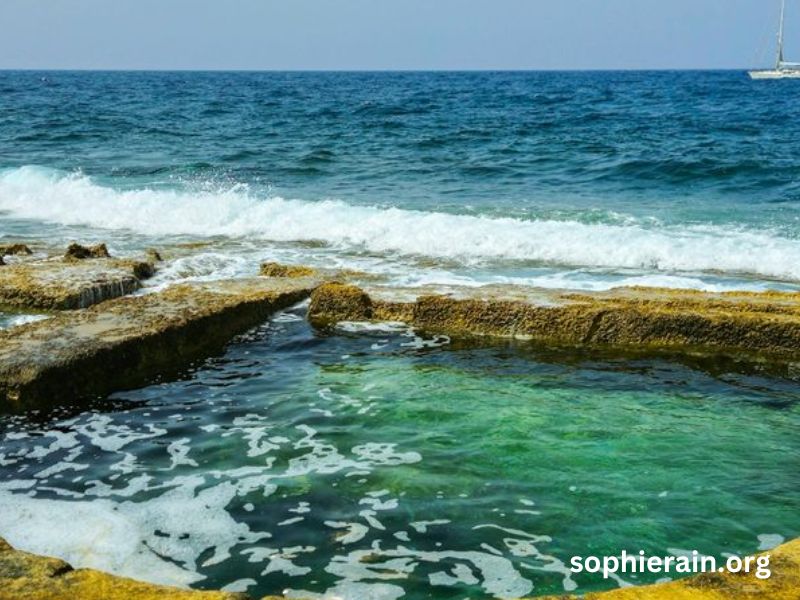Malta, an island rich in history, culture, and archaeological wonders, is home to some of the most significant remnants of ancient civilizations. One of the island’s fascinating historical treasures is the Roman tidal baths, which reflect the sophisticated engineering skills of the Romans. Situated along Malta’s coast, these baths offer an exceptional insight into the past, especially their intricate relationship with the sea level and tidal movements. In this article, we will explore the history, purpose, and fascinating features of the Roman tidal baths in Malta, focusing on their unique relationship with the sea and the level at which they were constructed.
The Roman Influence in Malta: A Brief Overview
The history of Malta is a tale of continuous human settlement, with the Romans playing a significant role in shaping the island’s heritage. Malta was incorporated into the Roman Empire in 218 BC, following the Punic Wars, and became an essential part of the empire’s naval and strategic network. During Roman rule, the island saw significant advancements in architecture, engineering, and urban planning. The Roman tidal baths are one such example of their advanced engineering.
These tidal baths, found along the island’s coastline, were carefully constructed to make use of the natural tides and the surrounding sea. Unlike traditional Roman bathhouses, which were fueled by internal heating systems like hypocausts, the Roman tidal baths in Malta were designed to utilize the ebb and flow of the sea. This ingenious adaptation not only showcased the Romans’ understanding of nature but also demonstrated their skill in integrating it into everyday life.
What Are Roman Tidal Baths?
Roman tidal baths, or balneae maritimae, are unique constructions that harness the power of the sea for bathing. These baths were built near or along the coastline and were carefully designed to interact with the natural tidal flow. The baths typically consisted of pools or channels that filled and emptied with the rising and falling tides, allowing bathers to experience the benefits of sea water in a controlled environment.
In contrast to the inland Roman baths, which were designed around heated water and complex systems of aqueducts, the tidal baths relied on the predictable rhythm of the sea to create a natural form of hydrotherapy. The water in these baths was not artificially heated but instead maintained a temperature that fluctuated with the tides. This made the baths an excellent way for the Romans to connect with nature while also enjoying the benefits of bathing.
The Construction of the Roman Tidal Baths in Malta
The Roman tidal baths in Malta were strategically located in areas where the sea level and tidal patterns were favorable. Malta’s coastlines, with their numerous bays and inlets, provided an ideal setting for these unique bath structures. The baths were typically constructed with durable materials such as stone, and their design was carefully planned to ensure that the water would flow in and out of the pools in harmony with the sea’s natural rhythms.
The design of these tidal baths often included features such as:
- Open Pools: Shallow pools that allowed water to flow freely from the sea, providing natural baths for the users.
- Channels and Drains: Ingeniously constructed channels that directed the sea water into the bathing areas and drained it away once the tide receded.
- Seawater Channels: These channels allowed for the controlled influx of seawater during high tide and its gradual withdrawal during low tide, ensuring a continuous flow of fresh, saline water.
The construction of these baths was a feat of Roman engineering, and they required an in-depth understanding of the local geography, tidal movements, and the interaction between seawater and the land.
The Role of Sea-Level Considerations in Bath Design
One of the most fascinating aspects of the Roman tidal baths in Malta is the careful consideration of sea level and tidal patterns in their design. The Romans were experts at understanding the natural world around them, and this knowledge allowed them to create bath structures that interacted with the sea in a way that was both practical and beneficial for the bathers.
Sea-Level Adaptation: The tide-driven baths in Malta were constructed with a keen understanding of the sea’s cyclical rise and fall. The pools were built at strategic points where the water would naturally flow into them during high tide, ensuring a fresh supply of seawater. When the tide receded, the pools would empty, allowing the water to be replaced with fresh seawater during the next cycle.
Tidal Influence: The Romans understood that the level of the sea could influence both the temperature and the cleanliness of the water. By designing the baths to be in sync with the natural ebb and flow of the tide, the water remained consistently refreshed, providing bathers with the benefits of clean, salty seawater. The tides also ensured that the temperature of the water remained relatively stable, giving bathers a consistent experience regardless of the season.
Historical Significance of the Roman Tidal Baths in Malta
The Roman tidal baths hold significant historical and cultural value. They are not only a testament to the Roman Empire’s engineering prowess but also provide valuable insights into the daily lives of the people who lived in Malta during Roman times. These baths were more than just places for hygiene and relaxation; they were also social hubs where people gathered, socialized, and enjoyed leisure time.
The use of seawater for medicinal and therapeutic purposes was common in the ancient world, and the Roman tidal baths in Malta were no exception. Many bathers visited the baths to take advantage of the healing properties of seawater, which was believed to have a range of health benefits, including improving skin conditions, promoting relaxation, and even aiding in the treatment of certain ailments. The salt content and mineral-rich waters were highly regarded for their therapeutic qualities, which made the baths not only a place of hygiene but also of healing.
Roman Tidal Baths Today: Preservation and Discovery
Today, the Roman tidal baths in Malta are considered significant archaeological sites. Many of them have been excavated, and some have been partially preserved to give visitors a glimpse of ancient Roman bathing practices. The remains of these baths are scattered across Malta’s coastline, and some of the best-preserved examples can be found near the towns of Birżebbuġa, Marsaxlokk, and St. Paul’s Bay.
Excavations of these tidal baths have revealed fascinating details about their construction and use. Archaeologists have discovered remnants of the original stonework, as well as tools and artifacts that were likely used by bathers. Some of the baths also contain inscriptions and carvings, which shed light on the cultural and social significance of these structures during the Roman era.
The preservation of the Roman tidal baths in Malta is crucial to understanding the island’s ancient history. Efforts to conserve these sites have allowed archaeologists to continue studying them, and ongoing research helps to further illuminate the role that the sea played in the daily lives of the Romans who inhabited Malta.
The Impact of Roman Tidal Baths on Malta’s Tourism
As Malta continues to attract visitors from all over the world, the Roman tidal baths have become an important part of the island’s cultural and historical tourism. These unique bath structures provide an intriguing connection to the ancient past, drawing tourists who are interested in history, archaeology, and ancient engineering.
Visiting the Roman tidal baths offers a rare opportunity to experience firsthand the ingenuity of Roman engineering and to learn more about how the ancient civilization interacted with the sea. Many guided tours of the tidal bath sites are available, providing visitors with in-depth information about the history and construction of these remarkable structures.
The discovery and preservation of the Roman tidal baths have also contributed to Malta’s broader reputation as a center for archaeological research and tourism. As the island continues to uncover more ancient treasures, the tidal baths stand as a testament to the enduring legacy of the Roman Empire in the Mediterranean.
Conclusion
The Roman tidal baths in Malta are a remarkable example of ancient engineering that showcases the Romans’ deep understanding of the natural world. By integrating the sea’s tidal rhythms into the design of their baths, the Romans created a system that not only provided health and relaxation but also demonstrated their innovative approach to engineering. These baths offer a fascinating glimpse into life during the Roman Empire, and their preservation ensures that future generations can continue to learn from the ingenuity of the past. Whether you’re a history enthusiast or a lover of ancient architecture, the Roman tidal baths in Malta are a must-see destination for anyone interested in the island’s rich cultural heritage.






